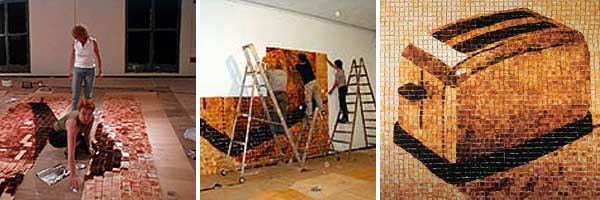
Using 2,500 pieces of toast, this 16.5ft (5m) x 15ft (4.5m) piece of art was made by toasting each piece of bread to a certain "doneness" based on a digital pixel image. It'd take a lot of butter and jam to eat your way through this one! (and for the record, apparently it's now a permanent piece of art in the Modern Art Museum of Buenos Aires!)
From: http://www.fa-art.pp.se/Baires.htm
The Toaster is a large picture, 5 meter wide and 4.5 meter high, totally made from slices of bread toasted in different lengths of time to reach the nuances between black and white, ochre and rust. It took several days of work and several friends and their toasters to prepare the 2.500 pieces of toast necessary to build the gigantic mosaic, which reproduce a photograph of a toaster.
[CONTINUED]
The Toaster
Bread and food in all forms and meanings are recurrent themes in the work of Falk and Aguerre. They reoccur throughout the years in different projects, prepared, tasted and eaten in different ways, taking advantage of the subconsciously symbolic tension which most people associate with food. The confrontation which is found within the unexpected uses of this symbol, food, causes unease, anguish or revulsion. Examples are found in Lucia's bleeding bread, or when the artists encourage the public to walk on the bread in Reliquias, and even in the aggression that brought La Donna's demise. The Toaster, is another work where bread is used and its symbolism is questioned.
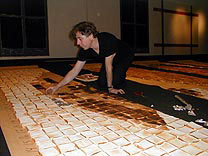
The Toaster was among public and press the most popular work at the Buenos Aires Biennial , a "public magnet" as an art critic called it, having an unusual big impact in the news papers and TV.
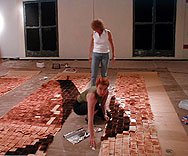
After the Biennial was acquired by the Modern Art Museum of Buenos Aires, being now a part of it's permanent collection.
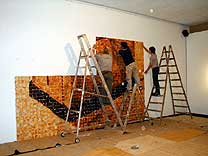
In this piece of work, we break down the daily pattern of this piece of kitchen machinery. The toaster toasts and when it does this it reproduces itself. The use of the object and the responsibility that we give to the material (in this case the bread) to change, transforms the pictures and the area of representation within them. But yet still, this transformation does not guarantee a representational figure in the traditional sense: the viewer moves between the instability of physical closeness, where the picture is erased but the individual pieces of bread are identifiable, and distance, where it is possible to reconstruct the picture at the expense of the image of the bread. As in all the work by FA+, there are many things happening on many levels, at the same time.
The reproduction of the photograph is an example of this in this work. The original work was digitized in 3.053 pixels where every pixel corresponds to a piece of bread which is roasted using analogues. This usage means that the digital picture can be recreated.
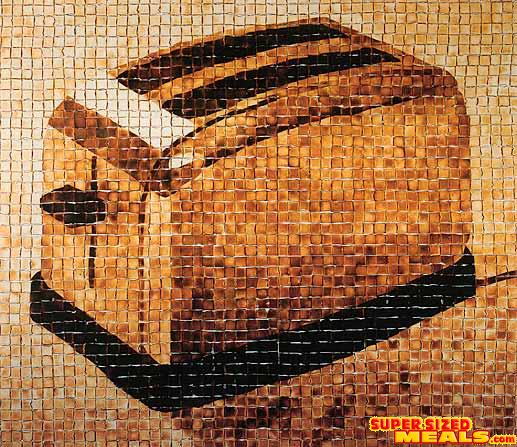
Comments (0)
SupersizedMeals.com
http://www.supersizedmeals.com/food/article.php/20060622224704326